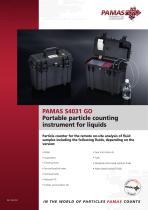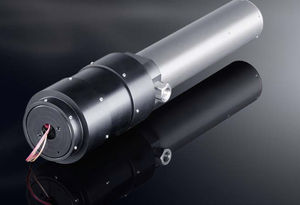
- Medical Technical Facilities
- Monitoring
- Flow sensor
- PAMAS Partikelmess- und Analysesysteme GmbH -
Flow sensor HCB-LD seriesmonitoring
Add to favorites
Compare this product
Characteristics
- Evaluation type
- flow
- Applications
- monitoring
Description
Light blockage sensors for standardised fluid contamination analysis Application: Particle contamination control of fluids (hydraulic f luids, lubricating oil, pharmaceutical liquids, etc.) Condition Monitoring and Cleanliness Control Filter testing and filter definition Component Cleanliness Control Optical particle counters work with the help of light. In optical measurement proceedings, the light beams through the liquid. The electromagnetic waves may be deflected or absorbed when meeting the particles in the measuring cell. The light effect REV 10/2020 on the particles is analysed with the help of a previously calibrated optical electronic hardware. Contamination analysis with the help of a PAMAS particle counter determines the quantity and the size of particles in a liquid. There are two basic principles of contamination analysis: the principle of Light Extinction (according to which particle sensors of the series PAMAS HCB-LD proceed) and the principle of Light Scattering (according to which the particle sensor PAMAS SLS-25/25 works).
Advanced sensor technology for precise fluid contamination control
Principle of Light Extinction According to the principle of Light Extinction, the liquid flows through the measuring cell of the sensor. The size of the measuring cell is different for each appli- cation. On one side of the measuring cell, there is a light beam, on the other side there is a photodetector.
on the photo-detector into the quantity of particles in the liquid. Furthermore, the particle sizes are distributed in different size classes.
Other PAMAS Partikelmess- und Analysesysteme GmbH - products
SENSORS
Related Searches
*Prices are pre-tax. They exclude delivery charges and customs duties and do not include additional charges for installation or activation options. Prices are indicative only and may vary by country, with changes to the cost of raw materials and exchange rates.





